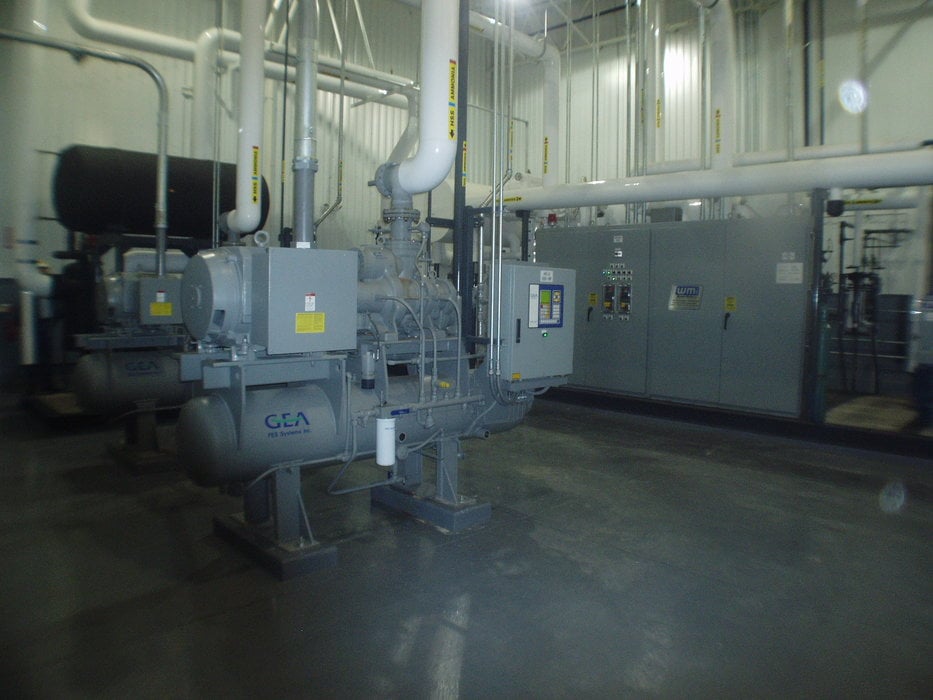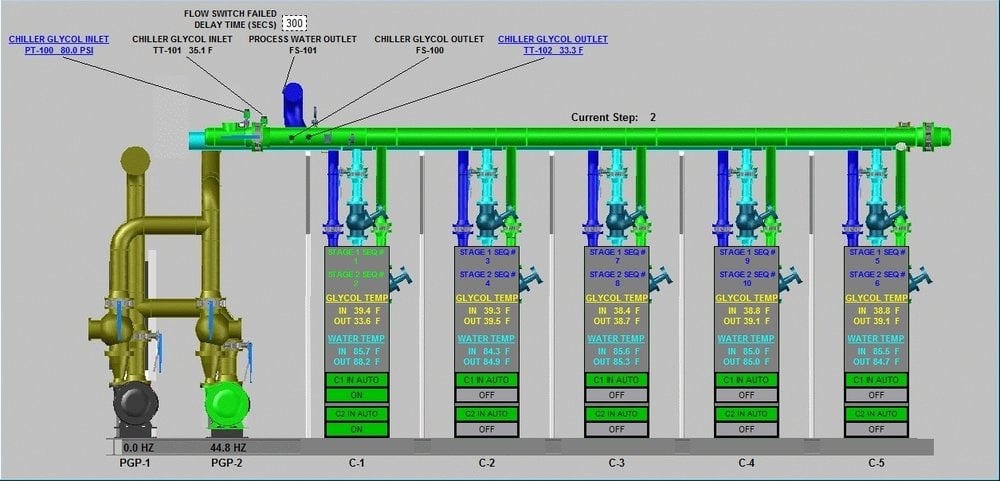www.magazine-industry-usa.com
16
'14
Written on Modified on
Gaining trust and confidence in EPLAN
Shift from drawing to engineering software a revelation

Since its launch just over 20 years ago, Wagner-Meinert, LLC of Fort Wayne, Indiana has seen its business as a full service provider of mechanical solutions, for the food processing industry, grow by leaps and bounds. The company specializes in the design and construction of ammonia refrigeration systems, HVAC, as well as steam and compressed air systems. They offer a full menu of after-care support services, including preventative maintenance and emergency service, parts sales and development of the government-mandated Process Safety Management programs for industrial ammonia users. “Wagner-Meinert expects to be there for its customers in their hour of need,” says Joe Wagner, Vice-President of Engineering. If a production line goes down, customers need service, ideally within a matter of hours or the economic losses really begin to spiral. Getting the customer up and running fast is a key loyalty builder. So is future-proofing each new layout by taking into consideration how the customer might wish to expand it. “We try to focus on customers who will partner with us, and treat us like part of their team,” says Wagner. “We feel that is the most successful approach since our goal is to give the customer the best possible end product for the best value.”

Engine Room
One key component of the Wagner-Meinert offering is the PLC-based control and monitoring systems. Every piece of equipment requires some form of control. Wagner-Meinert could sub-contract this engineering work, but prefers to keep it in-house. “Many companies we deal with do not have engineering groups or departments, so we essentially become their engineering department,” says Dave Miller, Controls Group Leader. A few years ago, Wagner-Meinert developed a company-wide strategic plan to support further growth. For Miller’s nine-member Controls Group, that included weighing the adequacy of the CAD drawing software being used for electrical design. Upon investigating the alternatives, and especially EPLAN, they began to realize just how much they were missing by not having a database-centric Computer Aided Engineering (CAE) Package.

Flooded Drum Heat Exchangers
EPLAN generates key documentation as schematics are created
In mid-2013, Wagner-Meinert adopted EPLAN Electric P8 to boost design productivity and promote design standardization. Only a year later, with the implementation, training and support from EPLAN, all but one member of Miller’s group had done a project in Electric P8. At first, unfamiliar with their new CAE, some designers were concerned that it was taking a bit longer to complete their schematics than it had previously taken. “What they didn’t realize,” says Miller, “was reaching that point of the project (in EPLAN) was the end of the project, everything was done.” Previously, when the drawings were finished, a lot of work would still have to be done, like the manual creation the Bills of Materials and wire lists and other documentation, cross-referencing and error-checking. This is now created automatically within EPLAN Electric P8 as part of creating the schematics. “And that truly is the realization of the difference between engineering software and drawing software,” he says.
While Miller hasn’t set up formal bench-marking of EPLAN yet, the consensus is that productivity is already up 15-25% using EPLAN, and he believes that is conservative. There was a 37% reduction in engineering hours per project in 2013, and he states EPLAN made a definite contribution to that improvement.
Incorporating revisions, once a time-consuming task, now a snap
Besides EPLAN’s many basic automation features like auto-connection and auto-cross-referencing, the Wagner Meinert team is finding significant productivity and organizational gains in EPLAN’s revisions management capabilities. Typically, project changes were labor-intensive to incorporate and error-check. With EPLAN Electric P8, it’s a minor matter to quickly process and error-check for major time-savings. “At first, we tended to double-check both original data and revisions in our EPLAN projects, but we soon came to realize that wasn’t necessary. The trust and confidence we have in the EPLAN data is gaining us our efficiencies. We have eliminated the time typically required for double-checking,” says Miller.
Smart PDFs facilitate external revisions
Some of the completed archived projects that were done in CAD software have multiple loose sets of documentation with different plot dates, which makes it difficult to identify the most recent version. EPLAN provides a revisions history, making it easy to identify the most recent version and who contributed what, where and when to it.
Wagner-Meinert also has begun employing EPLAN’s Smart-PDF import/export capabilities to incorporate third-party changes with impressive results. One instance that the Smart PDF’s was valuable was when they downloaded a project’s PDFs for a new dairy installation to a laptop and then they met with the electrical contractor on site. With their previous software, incorporating redlining and schematic changes was a very labor-intensive process. Now with EPLAN, they noted the redlines right into the EPLAN PDFs, re-imported them at the office, approved the changes, and all changes were incorporated automatically within the EPLAN Electric P8 software, in a fraction of the time it used to take. “We take the layer that has the redlines in the PDF, and import it. EPLAN puts it right on top of the drawing, finds each change and does the re-drawing part for us. Now that’s the way the process needs to work!” says Miller.

Geothermal Chiller HMI Screen
EPLAN driving standardization, best practices
As they become more familiar with EPLAN, the Wagner-Meinert controls group is implementing rule sets as part of a company-wide standardization initiative. This includes standardizing the network program directory structure that will ensure project contents are stored in a uniform manner that makes it easy to locate information. The controls group has been downloading vendor component datasets from the EPLAN Data Portal to populate their parts database. Resulting in time savings by not having to search for these parts and upload them into their database or recreating the parts from scratch. Now, with the current and correct data, they can access the bill of materials and send it directly to the purchasing department.
Other areas that Wagner-Meinert are utilizing for standardization are symbols, parts, part numbers and reporting. These areas are easily customizable to create uniformity among all designers. An example is standardizing part numbers so the parts will always be identical, no matter the job, never having two very similar parts from different vendors. "Using EPLAN as a standardization tool has forced us to consolidate into best practices," says Miller.

Dairy Built by WMI
Leveraged EPLAN for huge time savings, workflow efficiencies
Wagner-Meinert, a US full-service provider of ammonia refrigeration systems, HVAC and mechanical systems for the food processing industry, wanted the best electrical design software to support the continued growth of its business. Switching to EPLAN from their CAD software accelerated the work of the controls system designer by automating many of the basic tasks required in all projects. As they create their schematics, EPLAN is building and cross-referencing the rest of the documentation automatically, including the bill of materials, wire lists and many more. Wagner-Meinert’s engineers have developed great confidence and trust that the EPLAN documentation is accurate so they no longer have to manually error-check their work. Also revisions that reflect changes, needed by the engineers or are requested by external parties - customers and contractors – are processed much faster, too. A year into their EPLAN evolution, the controls group has a greater appreciation of the CAE solution and realize there are still many other benefits they can accomplish by harnessing the systems full potential. A key approach going forward will be to standardize symbols, reporting formats and parts macros in their EPLAN database to capture further efficiencies in project development and management, both individual and systemic.
Find out more about Wagner-Meinert, LLC at www.wagner-meinert.com

